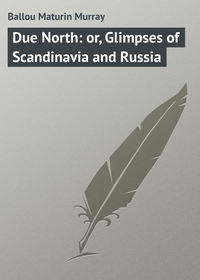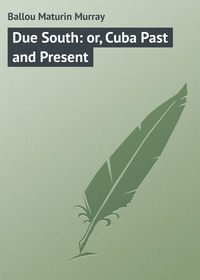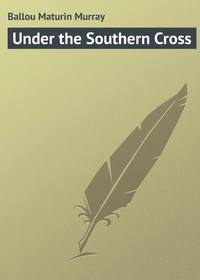 полная версия
полная версияThe Story of Malta
Malta is more distant from the mainland than any other Mediterranean island. It is less than twenty miles in length, not quite so large as the umbrageous Isle of Wight, on the coast of England, though it has nearly three times as many inhabitants. One often hears that garden of England compared with Malta, but wherefore, it is impossible to understand. It would be difficult to imagine a greater contrast than these two isolated places present. One, embowered in grand old trees and the rural accessories of a land which nature has delighted to clothe in verdure; the other, a solitary rock, a convulsive upheaval of the sea, reclaimed only by patient toil from utter sterility.
The various natural causes which have operated to reduce Malta to its present size and shape have been very thoroughly discussed by scientists, a majority of whom agree that it was once attached to the continent of Europe or of Africa. Our own humble opinion is that it was probably the connecting link between them both, some time in the long, long ages which have passed, – a deduction which will seem more reasonable to the patient reader as we progress in our narrative.
The island is of an irregular oval form, having a superficial area of about one hundred square miles. The Malta of to-day is only a diminutive, sea-girt, limestone rock, cropping out of the watery depths to a height, at its culminating point, of between seven and eight hundred feet, partly covered with a thin though fertile soil. But its associations are of a character closely bordering upon romance, and intensely interesting for their antiquity and novelty. The highest point of the island is at Casal Dingli, on the south side, where, to be precise, the serrated ridge of the cliffs reaches an elevation of seven hundred and fifty feet above sea level. There is, however, no such average height maintained in any part of the group. The southern shore is of such a bold, inaccessible character as to require few, if any, fortifications to protect it from possible invasion by an enemy. It resembles for long reaches the rugged, precipitous coast of Norway, presenting a line of abrupt, repelling rocks, rising perpendicularly from out of the sea to an average height of two or three hundred feet. The face of these abrupt cliffs is accessible only to sea-birds and creeping reptiles.
The opposite or northern side of the island is quite different; being more shelving, and available for landing purposes. It presents numerous sheltered coves and good harbors for light draught vessels, together with a great variety of pleasing features peculiar to seaside landscape. At the southeast end of Malta is the spacious bay and port of Marsa Scirocco. There is here a good depth of water, and the harbor is divided, somewhat like that of Valletta, by a promontory or tongue of land. There is a large fishing village at the head of the bay. Here the Turks landed an invading army, May 18, 1565, to begin the famous and sanguinary siege of that date. On June 10, 1798, the French under General Bonaparte disembarked their troops in the same bay. Northeast of this place, and half way to Valletta on the coast line, is the small inlet of Marsa Scala, which is only a shallow bay. The small Sicilian traders are accustomed to come hither in their light draught boats rather than to land at Valletta. Still following the northern shore beyond the admirable double harbor of the capital, we have the lesser bays of St. Julian, St. George, and Maddalena, besides the larger ones of St. Paul and Melleha.
Crossing the narrow Straits of Freghi, we find on the north coast of Gozo the bays of Ramla and Marsa-el-Forno, while on the south side are those of Scilendi and Duejra. In this enumeration we have all the bays and harbors of any importance in the whole Maltese group. Landing on the southern side of either the larger or the lesser island is for the most part impracticable, precipitous cliffs rising sheer from the water's edge in Gozo, as we have described in Malta proper. On these cliffs incessant breakers chafe and foam upon the black, barren rocks even in calm weather. Standing on this lonely shore, there is a fascination in listening to the solemn moan of the restless sea, in whose bosom there is so much of sadness, of direful secrets, and of unspent power. The trend of these islands, which form a very compact group, is nearly in a straight line from southeast to northwest. A bird's-eye view of the north side of the island of Malta affords glimpses of the blue sea penetrating the barren and yellow land for short distances, like Norwegian fjords, and supplying the absence of rivers and lakes as regards scenic effect, objects which the eye seeks for in vain throughout this rocky group.
Few islands, or, indeed, we may say few reaches of seacoast on the mainland, of similar dimensions, can show so many good and available harbors as are found on the north shore of Malta. Though the commercial necessities of the group have not yet caused them to be specially improved for shipping purposes, yet they will always be available. The admirable twin harbors of the capital have so far afforded all necessary facilities, but should the group improve as rapidly in business and population for the next few years as it has done during the last decade, another convenient harbor on the north coast will naturally become developed into a commercial dépôt, while the construction of a new and modern city will be sure to follow.
It is doubtful if there are many persons, even among those who are engaged in commerce, who realize the large amount of business which the government statistics already credit to the Maltese group, a commerce which is annually on the increase. The returns for the year 1891 show that the imports and exports of Valletta are almost exactly the same in the aggregate values, each considerably exceeding twenty-two million pounds sterling.
The presentation of an important statistical fact will emphasize this statement. Over six hundred thousand tons of coal are annually imported for use and for exportation. The arrival and departure of ten large steamships is a fair daily average, supplemented by one or two sea-going private yachts. There are few days in the year that the echoes are not ruthlessly awakened by the interchange of salutes with newly arrived vessels of war. Altogether, the two harbors of the capital present a constantly varying scene of great maritime activity, while the town itself is a picture of gay and varied life, rivaling in this respect many a continental metropolis far more pretentious, and having thrice its population.
As the present possessors of the island of Malta, its story has doubtless a greater degree of interest for the English than for any other people. But as regards its relation to the history of the past, its importance is universal. When it was a Phœnician colony, so long ago, it was a powerful factor in the political calculations of the Christian powers; but above all other associations, the island will always be famous as the place where the glory of the chivalrous Knights of St. John reached its zenith, and where it also came to its ignominious end. Of this period the pages of history furnish a fair amount of truthful detail, but conjecture alone can fill the blank which precedes the arrival of this remarkable order at Malta.
CHAPTER II
Island of Hyperia. – Where St. Paul was Wrecked. – An Historical Bay. – Rock-Cut Tombs. – Curious and Unique Antiquities. – Sovereignty of the Knights of St. John. – An Anomalous Brotherhood. – Sailor-Monks. – Ancient Galleys. – A Famous Barbary Corsair. – Antique Norwegian Vessel. – Navy of the Knights. – Barbaric Warfare. – About the Maltese Nobility. – Romantic History. – "Arabian Nights." – Valletta the Beautiful.
Lovers of classic fable will remember that one of the islands of this group was named Hyperia by Homer, and was the supposed residence of the mystic nymph Calypso, where she entertained – not to say detained – the shipwrecked Ulysses by her siren fascinations, when he was on his way home from Troy. Her grotto, entirely shorn of its poetic adornment, is exhibited to the curious stranger at Gozo. It was while under the Phœnician dynasty that Calypso is supposed to have kept Ulysses prisoner for seven years. Such ingenious allegories impart a certain local and romantic interest, though they rather obscure than illumine history. Homer threw a glow of poetic fancy over the localities which he depicted, while Scott – to present a contrasting instance – gives us photographic delineations of the times and places to which he introduces us. In "Kenilworth," for instance, the novelist teaches the average reader more about the days of Queen Elizabeth than a labored history of her reign would do, presenting it also in such a form as to fix it firmly upon the mind.
It would seem that fable, like history, is bound to repeat itself, since thousands of years subsequent to Ulysses' shipwreck here, another disaster of this sort, but of far greater import, took place upon the group.
According to Biblical record, St. Paul, when a prisoner, on his way from Jerusalem to Rome to plead his case before the Emperor Nero, about sixty years after the beginning of the Christian era, was wrecked in a rocky bay of Malta which still bears his name, —La Baia di San Paolo. It is situated seven or eight miles northwest from Valletta, and forms a broad inlet, the entrance to which is nearly two miles wide, running inland about three miles. It has some twenty fathoms of water at the entrance, gradually shoaling towards its upper extremity. Seaward, and near the mouth of the bay, is a small island. The shore is dominated by the Tower of St. Paul, a square stone structure erected February 10, 1610. The day indicated is the supposed anniversary of the wreck. Near the tower is a chapel, in which are some paintings and frescoes, which depict in a crude manner the catastrophe which occurred to the Apostle. A small fishing village exists here to-day, as in the time of the famous wreck. The creek just below the stone church is still the refuge for fishing-boats when the weather is stormy.
A dark, threatening, straggling ledge of rocks rises above the surface of the water some distance from the shore, over which the restless sea breaks in fleecy clouds of spray. Upon this ledge, after being tempest-tossed for fourteen days and nights, the bark which bore St. Paul is supposed to have foundered.
"They ran the ship aground; and the forepart stuck fast, and remained unmovable, but the hinder part was broken with the violence of the waves." On Selmoon Island, just referred to, there is a colossal statue of St. Paul, which was erected by the devout Maltese some fifty years ago. The popular reverence for the Apostle's name in this region is very general, bays, churches, streets, and chapels being designated by it, while in the inland villages may be found wayside shrines, small outdoor altars, and springs of delicious drinking-water, dedicated to this revered name. A grand annual festival takes place on February 10, commemorative of the shipwreck of the Apostle to the Gentiles, – Paul, the poor tent-maker of Tarsus. The church of San Paolo, Valletta, in the street of the same name, is the headquarters of this annual demonstration, which takes the form of processions, illuminations, and church ceremonials. This special style of public display is very dear to the average citizen of Malta.
It was a little over fourteen hundred years after the event of the wreck in St. Paul's Bay, which occurred about A. D. 60, that Malta was deeded by the Emperor Charles V. to the then homeless Knights of St. John, together with Gozo and Tripoli, a fact which will be more fully referred to as we progress with our story of the group.
There has been much ink wasted in controversy as to whether this was really the island and this the bay where St. Paul met with his maritime adventure, but it certainly seems to answer every necessary requirement, and has for several centuries been thus universally designated. The average visitor feels no doubt that he gazes upon the "certain creek with a shore, into the which they were minded, if it were possible, to thrust in the ship" (Acts xxvii. 39). A fresh northeaster was blowing as we viewed the scene, driving the waves in gallant style upon the ledge and shore, while at the same time filling the air with misty spray and rank sea-odors. The long line of milk-white combers, after expending their force upon the shore, rushed swiftly back, drawn by a mysterious undertow towards the deep waters. The noise of the vexed and boisterous element created a continuous roar, as the waves followed each other in endless succession. It was the grégalé, the northeasterly blast so much dreaded by the fishermen, and which in the olden time, before navigation was better understood, created such havoc in this midland sea. It would have been difficult to effect a dry landing, even from a well-managed boat, with such a troubled sea running. One naturally remembered "a tempestuous wind called Euroclydon" which the Apostle encountered, while the imagination was busy in depicting the struggle of Paul and his companions to reach the shore on broken timbers of the ship.
The beach of St. Paul's Bay seems to be composed of the very smallest of sea-shells, together with some larger ones, which have been mostly broken and powdered by the endless hammering of the waves. There is a fine sand, or something which represents it, probably composed of the powder from the shells. This place is a favorite resort of the people from Valletta for bathing purposes, but it was not an inviting day when we stood by the shore, and no bathers were seen. It was very natural for one to recall the Biblical words, "He maketh the deep to boil like a pot."
In this neighborhood there are numerous prehistoric rock-hewn tombs, cut by ingenious and skilled hands with effective tools. That these are Phœnician remains, there seems to be little if any doubt. Those aboriginal colonists were the commercial people of their time, who settled much earlier at Rhodes, and other islands of the Levant, than they did at Malta. They planted colonies in Sicily, Sardinia, and Spain. Carthage was founded by them. Malta afforded a convenient stopping-place between Carthage and the mother country, and was naturally prized on that account, having such ample harbors of refuge, and it doubtless afforded the means of repairing any damages which resulted from storms at sea.
Out of the rock-hewn tombs, of which we were speaking, interesting relics bearing Phœnician characters have been taken from time to time, such as vases and mural urns, together with articles of domestic use made from burnt clay, some of which are preserved in the Museum at Valletta. Other curiosities from the same source are to be seen in the private collections of English officials, and of wealthy Maltese. Years of research would not exhaust the interest which the student of the past must feel in these antiquities. We know of no more fruitful theme or more promising field, for the historian and the archæologist, than is here presented. It is not an untried one, but it is very nearly inexhaustible, in pursuing which little expense and no hardship is necessarily encountered. Every facility is freely accorded, both by the resident population and by the government.
Some of the best examples of Phœnician inscriptions now to be seen in the British Museum were brought to light at Bighi, in these islands, where this ancient people worshiped Juno in a stately temple which stood on the spot now occupied by the moat of Fort St. Angelo. There are few parts of the world so varied in antiquarian interests as the islands of this group. Professor Sayce, the eminent Orientalist of Oxford, England, tells us that Malta contains Phœnician antiquities of a kind found nowhere else, and he pronounces the sanctuaries of the Giant's Tower, in Gozo, together with its companion ruin in the larger island, absolutely unique. These islands undoubtedly occupied an important position in the history of those remote days. The few Maltese who have written about this period dwell with great emphasis upon the glory of Malta while under Phœnician rule, though they are quite unable to give us any reliable details of the long ages in which this people held sovereignty here.
Within a few years some remains were unearthed which were attributed to the Goths, but of all the people who have been mentioned, they probably left fewer evidences of their presence in Malta than did any other race. After becoming masters of Italy and Sicily, they came hither about A. D. 506, and held possession of the group for nearly forty years, until they were expelled by the army of Justinian under Belisarius.
The most romantic period of the ever-changing history of this group of islands, subjected first and last to the control of so many different nationalities, is undoubtedly that embraced in the two centuries and a half of the eventful sovereignty of the Knights of St. John, – Knights Hospitallers, as they were very properly called at first, the most famous order of mediæval chivalry, whose name is more familiar to us as Knights of Malta. The first convent of the founders at Jerusalem was dedicated to St. John; hence the original name of the order. It was the earliest systematized charity of the sort concerning which we have any authentic record. If the true history of this organization could be written, it would overshadow the most vivid romance. It began in Palestine during the darkness of the tenth century, when the Saracens were masters of Jerusalem, and it extends to the verge of the eighteenth. It is but the outline of important events, which live through the ages to reach us. The individual is sunk in the mass, and yet real history is but enlarged biography. The truth of this is shown in the life of La Vallette, as handed down through three centuries. His biography gives us a better history of the order of which he was Grand Master than do writers who attempt it by treating the brotherhood as a whole. Had the moral character of the Knights of St. John been equal to their dauntless courage, the order would have formed a worthy example for all time; but their record shows them and their deeds to have been of mingled good and evil, the latter quality oftenest predominating. In the period when their material prosperity was at its height, they were equally celebrated for wealth, pomp, and vice. While they were boastful and claimed to be invincible, unlike most braggarts, they were undeniably brave. Nor was this by any means the only anomaly in the character of this singular and famous fraternity. Their career exemplified vice and self-abnegation, hospitality and piracy, the devoted care of the sick and the slaughter of their fellow-men, in about equal proportions. These clerical warriors presented a unique phase of human nature, the outgrowth of a period which, while demanding much sternness of character to cope with its exigencies, was also peculiarly amenable to the influence of religious superstition. The brotherhood owed a large degree of its influence to the cloak of sanctity which it so boldly assumed, but the humble spirit of which it so unhesitatingly and persistently outraged.
The attempt to unite two professions so remote in principles was like trying to make oil and water mingle.
The Grand Master, whose authority was absolute, was elected by the Knights from their own body, and held the office for life. In the choice of this individual, the order seemed to be almost always influenced by more than common wisdom, their election being guided by the best influences and wisest judgment. They realized the proper qualities which should characterize one placed in this responsible position, and chose accordingly. They did not seek to elect such a leader as should favor this or that "language," this or that section of the fraternity, but one who was endowed with sufficient courage and conscientious piety to rule over them with impartiality. That there was an element of weakness ever present among them, emanating from the division into languages, is very true, and it was this influence which the Grand Master had always to guard against. National rivalry was inevitable, no matter how much the fraternity endeavored, as a body, to avoid it.
The Knights of St. John made the island of Malta the bulwark of Christendom against the advance of the pale, but bloodstained standard of the Turks. Even after settling here, which proved to be their final home, a bitter and murderous conflict was carried on by them with the Ottoman power, both on sea and land, but especially in their galleons, until at last, after triumphantly sustaining an unprecedented siege, during which they actually killed the enemy in the trenches, three times their own number, the Knights, with ranks seriously thinned, were left in undisputed possession of these islands. Victory not only crowned their sanguinary warfare with the Turks, but they also rid the Mediterranean, at least for a considerable period, of a much-dreaded scourge, which had so long hampered the commerce of these waters, namely, the rapacious Greek, Turkish, and Algerine pirates. In the armory of the Grand Palace at Valletta, there may be seen to-day, among other trophies taken from the enemy by the Knights, the sword of the renowned pirate chief, known as Admiral Dragut, who was also Pasha of Tripoli. The owner of the sword was fatally wounded in the siege of Malta, before the walls of St. Elmo, in 1565.
This daring man, entirely wanting in the attribute of mercy, and known as the most reckless and successful corsair of his day, yet preserved some chivalrous instincts which were exhibited on occasion. A gallant saying, which is often attributed to others, was first uttered by him, if we may believe contemporary authority. It was at the time when the Turkish forces, with whom Dragut had joined in the attempt to take Malta, after struggling for months in the vain endeavor to capture the fort of St. Elmo, were engaged in the last decisive assault. The pirate, now advanced in years, lay sorely wounded and dying, when he asked the surgeon, who was by his side, "How goes the battle?" "Our soldiers have taken the fort and massacred its defenders," was the reply. "Allah be praised!" gasped the sinking corsair, "then I die content." These were his last words. Dragut was very humbly born, beginning his profession as a common seaman, at the lowest round of the ladder, that is, as cabin boy. His fortune was a strangely varied one, now a galley slave, now a soldier in the Sultan's service, now a pilot on the sea, and now a daring pirate, working his way upward by patient determination, until finally he stood as master upon the deck of his own galley, and was the terror of these seas. It was not long before he became admiral of the entire Turkish navy. Dragut had pursued his piratical and warlike career for nearly half a century. He possessed executive qualities which fitted him to act both as an admiral and as a general, a large share of his victories having been achieved upon the land. He had agreed with the Sultan of Turkey to join forces with him in the attack upon Malta, but was delayed for a few days, so the Sultan's commander began the siege without him. Mustafa Pasha made a bad piece of business of it, and did not open his attack with true soldierly skill. When Dragut arrived, important changes were promptly made, and it was while directing these movements that the famous corsair received his death wound.
We have seen that the organization of St. John did not confine itself to warfare upon the land; many of the order were trained seamen, and were always ready to take the aggressive in marine enterprises when occasion offered. The strict vows of the brotherhood compelled the members to wage ceaseless warfare against the infidels. This was the most clearly defined and determined of their purposes, in the prosecution of which they adhered tenaciously to the last. In these sea fights their well-known courage, superior weapons, and persistency nearly always insured success. Their galleys, well equipped for that period, were held in readiness for service, moored in the land-locked creeks of Grand Harbor. These were efficient vessels for the immediate service they were designed to serve. They were over one hundred feet in length and twenty-five wide, being propelled by oars or sails, according to the wind. The sails were not designed for use unless the wind was aft, as the art of tacking and sailing to windward was not then practiced. Fifty oars, that is, twenty-five on a side, was a common arrangement, and there were from three to six galley slaves at each oar, according to the size of the vessel. These men were chained in their places, and if they did not work to the satisfaction of the boatswain, the lash fell without mercy upon their bare backs. A galley was rigged with two masts, upon each of which a large square sail was hoisted. When the oars were in use, these sails were clewed up. Several cannon were fitted to each side, and one was designed to fire from the stern; but when in action, the usual plan was to ram the enemy's craft, and thus disable him, or, by boarding, to effect a capture in a hand-to-hand fight. The half-naked, half-starved slaves often dropped dead at the oars, and were ruthlessly cast into the sea. No more cruel punishment could be inflicted upon a criminal than to condemn him to the life of an oarsman in the galleys.









